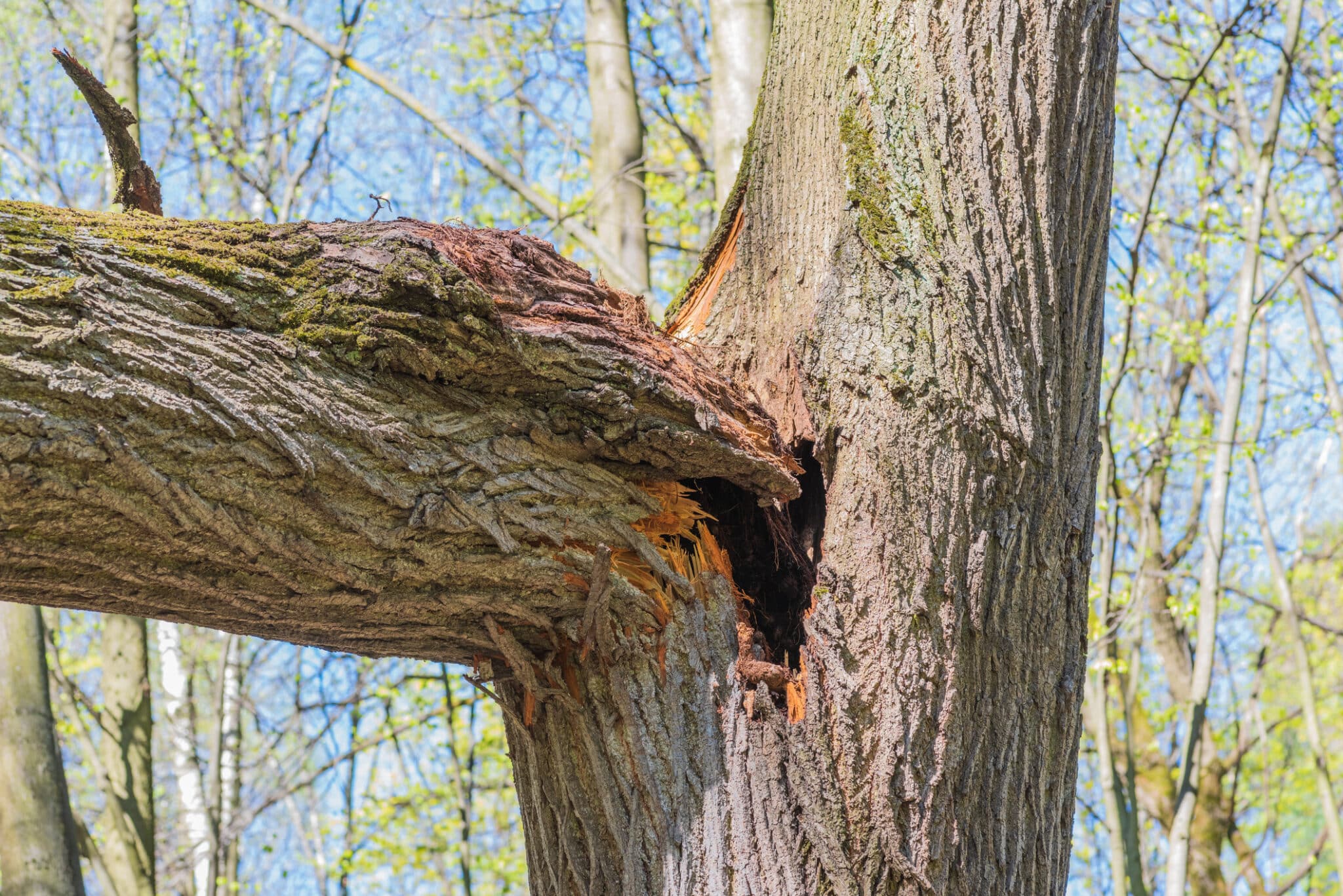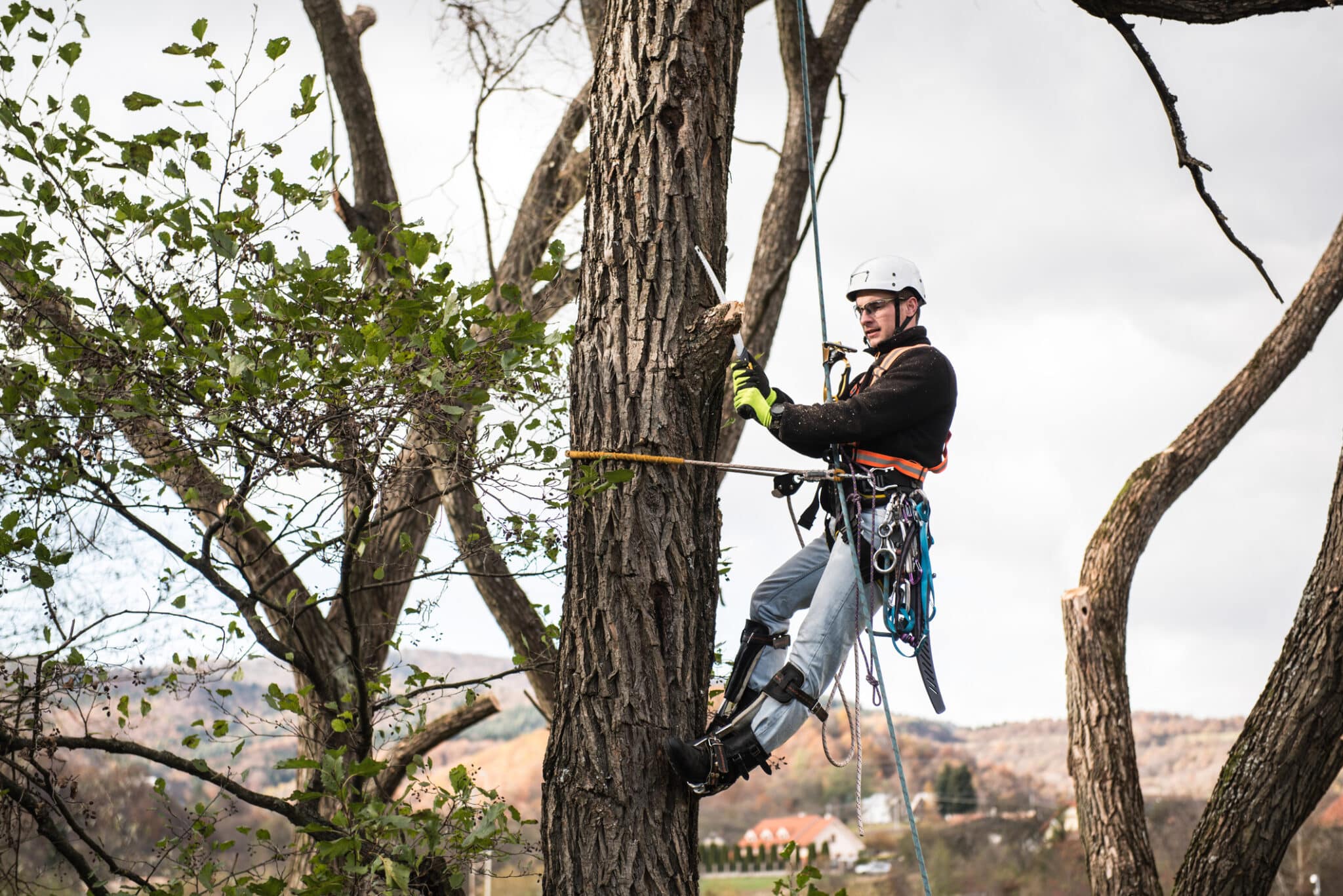How Certified Arborists Help Trees Survive Texas Weather
In Texas, where the weather oscillates between scorching summers and unexpected freezes, trees face a tough battle for survival. Certified arborists play a crucial role in this ongoing fight, providing the expertise needed to help these natural giants withstand the harsh conditions. Their knowledge spans across the diverse climate zones of Texas, from the humid stretches of Prosper, TX, to the more temperate regions of Midlothian, TX. This professional guidance ensures trees not only survive but thrive, despite the unpredictable weather patterns.
Understanding the unique challenges that Texas weather presents is essential for any certified arborist. They are trained to recognize the signs of stress in trees caused by extreme temperatures, droughts, and storms. This insight allows them to implement targeted care strategies, ensuring each tree receives the attention it needs to maintain its health and vitality. It’s this level of specialized care that sets certified arborists apart from general tree care services.
In cities like Prosper and Midlothian, where community landscapes significantly contribute to the local charm, maintaining healthy trees is a priority. Certified arborists are at the forefront of this effort, employing advanced techniques to protect trees from the adverse effects of Texas weather. Their work not only preserves the beauty of these cities but also supports the ecosystem by ensuring the longevity of its trees.
The role of certified arborists extends beyond mere tree care, they are vital in creating resilient landscapes that can withstand the rigors of Texas weather. By fostering strong, healthy trees, they enhance the quality of life for residents and contribute to the sustainability of the environment. Their expertise ensures that, regardless of the weather challenges ahead, the trees of Texas are in capable hands.

Understanding Texas’s Challenging Climate for Trees
Understanding Texas’s challenging climate requires a deep knowledge of how weather extremes affect tree health. Certified arborists possess this expertise, enabling them to diagnose issues before they become critical. They assess the impact of prolonged droughts, which can weaken a tree’s structure, making it more susceptible to disease and pests. This proactive approach helps in maintaining the vitality of trees, ensuring they continue to flourish.
In response to Texas’s severe weather, certified arborists implement strategic water management practices. They advise on proper irrigation techniques that mitigate the stress caused by heat and drought. These professionals also recommend mulching to retain soil moisture and protect roots from extreme temperatures. Such measures are essential in preserving tree health during the state’s hot, dry summers.
After a storm, certified arborists play a crucial role in recovery efforts. They inspect trees for damage, safely removing broken branches and stabilizing trees at risk of falling. This not only protects property and lives but also aids in the tree’s natural healing process. Their skills ensure that trees can recover from storm damage more effectively, maintaining the urban canopy’s integrity.
Certified arborists also guide residents in selecting the right trees for Texas’s diverse climate zones. They recommend species that are resilient to local weather conditions, enhancing the sustainability of urban and rural landscapes. By choosing the right trees, communities benefit from green spaces that are both beautiful and durable. This thoughtful planning contributes to healthier, more resilient ecosystems across Texas.
The Role of Certified Arborists in Tree Health
Certified arborists bring a wealth of knowledge to the table when it comes to nurturing tree health in Texas’s unpredictable climate. They conduct thorough health assessments, identifying potential issues before they escalate. This proactive approach ensures trees remain robust, reducing the likelihood of disease or pest infestation. Their expertise is invaluable in sustaining the natural beauty and ecological balance of Texas landscapes.
In addition to preventive care, certified arborists play a pivotal role in post-storm recovery. They quickly assess storm damage, prioritizing safety by removing hazardous limbs and debris. By doing so, they not only safeguard communities but also help trees begin the healing process more efficiently. Their swift, decisive actions help restore the green canopy, crucial for the environment and community well-being.
Furthermore, certified arborists contribute significantly to water conservation efforts in Texas. They advise on efficient watering schedules and techniques that ensure trees receive adequate moisture, even during drought. Their guidance on water conservation practices reflects a deep understanding of the local climate and its impact on tree health. This expertise helps communities manage their resources more effectively, promoting sustainable growth.
Lastly, certified arborists enhance urban and rural landscapes through strategic tree selection and placement. They recommend species that are well-suited to withstand Texas’s extreme weather, from scorching heat to freezing temperatures. By selecting the right trees, they create more resilient green spaces that enrich the community. Their contributions lead to healthier, more vibrant environments that thrive year-round.
Water Management Strategies by Certified Arborists
Certified arborists in Texas understand the critical role of water management in supporting tree health amidst the state’s extreme weather conditions. They leverage their expertise to develop irrigation plans tailored to each tree’s needs, promoting deep root growth and resilience against drought. This approach ensures trees in places like Prosper, TX, receive the right amount of water, even during the hottest months. As a result, trees are better equipped to withstand dry spells and contribute to a lush, healthy landscape.
Mulching is another technique certified arborists recommend to conserve soil moisture and protect tree roots from temperature extremes. By applying a proper layer of mulch around the base of trees, they help retain water, reducing the need for frequent irrigation. This practice not only supports tree health in arid areas of Texas but also enhances soil fertility, encouraging a vibrant, natural environment. In cities like Midlothian, TX, such strategies are essential for maintaining the urban green canopy.
In addition to irrigation and mulching, certified arborists advise on drought-tolerant tree species that thrive in Texas’s challenging climate. Selecting the right trees for the landscape ensures that green spaces remain robust and beautiful, despite the weather’s unpredictability. These professionals understand the importance of biodiversity in creating resilient ecosystems that can recover from environmental stressors more quickly. Their guidance helps communities across Texas choose species that will flourish, enhancing the area’s natural beauty and ecological health.
Lastly, certified arborists play a pivotal role in educating the community about the importance of water conservation in tree care. They offer workshops and resources on efficient watering techniques, emphasizing the benefits of smart irrigation systems and timing. This education empowers residents to take an active role in preserving their local environment, fostering a culture of sustainability. Through their expertise, certified arborists ensure that Texas’s landscapes remain vibrant and healthy, capable of withstanding whatever weather comes their way.
Preparing Trees for Texas Heat and Drought
Certified arborists are well-versed in preparing trees for the intense Texas heat and prolonged drought conditions. They start by conducting soil assessments to ensure trees in areas like Prosper, TX, have the nutrients they need to withstand dry periods. This proactive step is crucial for enhancing a tree’s drought resistance. By adjusting soil conditions, these professionals help trees better retain moisture and remain healthy.
In addition to soil care, certified arborists recommend strategic pruning to reduce a tree’s water demand during droughts. Removing unnecessary branches allows the tree to focus its energy and resources on maintaining vital functions. This technique is especially beneficial in Midlothian, TX, where summer temperatures can soar. Pruning not only conserves water but also strengthens the tree’s structure, making it more resilient to weather extremes.
Certified arborists also guide homeowners in installing efficient irrigation systems that deliver water directly to the tree’s root zone. This targeted watering approach minimizes waste and ensures trees receive the moisture they need to survive the scorching Texas summers. Such systems are invaluable in conserving water while keeping urban and rural landscapes lush and vibrant. They play a key role in maintaining the health of trees during periods of low rainfall.
Lastly, certified arborists emphasize the importance of choosing native or drought-resistant tree species for new plantings. These trees are naturally equipped to handle Texas’s harsh climate, requiring less water to thrive. By selecting the right trees, communities can create sustainable landscapes that withstand the challenges of heat and drought. This forward-thinking approach by certified arborists ensures the long-term health and beauty of Texas’s green spaces.
Recovery Techniques for Storm-Damaged Trees
Certified arborists have developed effective recovery techniques for trees damaged by storms, a common occurrence in Texas’s volatile weather. They start with a thorough assessment to identify all the damage a tree has sustained. This careful evaluation ensures no harm is overlooked, which could lead to further issues. By prioritizing the most critical repairs, they help trees begin the healing process more efficiently.
In Prosper, TX, certified arborists often use cabling and bracing to stabilize storm-damaged trees. This method supports weakened structures, preventing further injury to the tree and surrounding property. It’s a precise technique that requires a deep understanding of tree biology and physics. These professionals ensure the safety and recovery of trees, allowing them to continue growing strong.
Another crucial step in the recovery process involves pruning. Certified arborists remove broken or hanging branches that pose risks to the tree’s health and the public’s safety. In Midlothian, TX, strategic pruning not only cleans up storm damage but also shapes the tree for better growth and resilience against future storms. This targeted approach helps trees recover more quickly and return to their natural beauty.
Lastly, certified arborists advocate for deep root watering and proper fertilization to rejuvenate storm-stressed trees. These practices encourage strong root development and improve overall tree health, making them more resistant to weather extremes. By implementing these recovery techniques, certified arborists play a vital role in restoring Texas’s green landscapes after the storm. Their expertise ensures trees not only survive but thrive, despite the challenges posed by the state’s unpredictable weather.
Protecting Trees from Unexpected Freezes
Certified arborists are well-equipped to shield trees from the harsh impacts of unexpected freezes in Texas. They start by wrapping the trunks of young and vulnerable trees in Prosper, TX, to insulate them against sudden drops in temperature. This practice prevents frost damage to the bark, which can be detrimental to a tree’s health. By taking such preventive measures, they ensure trees remain strong through the winter months.
In Midlothian, TX, certified arborists recommend the application of anti-desiccant sprays to evergreen foliage. These sprays form a protective barrier that locks in moisture, preventing the leaves from drying out during cold snaps. This technique is crucial for maintaining the vitality of evergreens when exposed to freezing conditions. It’s an example of how certified arborists tailor their approach to meet the specific needs of each tree species.
Another strategy involves the strategic use of mulch to protect tree roots from freezing temperatures. Certified arborists apply a thick layer of mulch around the base of trees, which acts as an insulator for the roots. This not only keeps the soil temperature more stable but also conserves moisture, a critical factor in a tree’s resilience to cold. Such practices demonstrate the arborists’ commitment to preserving the health of trees throughout the winter.
Finally, certified arborists conduct thorough inspections in the aftermath of a freeze to assess any damage and determine the necessary recovery steps. They prune any frost-damaged limbs to prevent decay and encourage healthy growth in the spring. This proactive care helps trees recover from the stress of freezing temperatures and sets them up for success in the coming seasons. Through these methods, certified arborists play a key role in protecting Texas trees from the unpredictable challenges of winter.
The Importance of Regular Tree Assessments
Certified arborists understand the critical need for regular tree assessments, especially in Texas’s fluctuating climate. In Prosper, TX, they conduct detailed evaluations to detect early signs of stress or disease in trees. This proactive approach allows for timely interventions, preventing minor issues from escalating into major problems. Their expertise ensures trees remain healthy and vibrant, contributing to the community’s overall well-being.
In Midlothian, TX, certified arborists also emphasize the importance of seasonal assessments. These checks become particularly crucial after extreme weather events, such as droughts or storms, which can significantly impact tree health. By assessing the trees at regular intervals, certified arborists can tailor care strategies to address the specific needs of each tree. This personalized care helps maintain the structural integrity and aesthetic value of the landscape.
Another key aspect of regular tree assessments involves soil testing, which provides valuable insights into the nutrients available to the trees. Certified arborists use this information to recommend appropriate fertilization programs, ensuring trees receive the necessary nutrients to thrive. This aspect of tree care is essential for promoting strong, resilient growth capable of withstanding Texas’s harsh weather conditions.
Lastly, certified arborists play a vital role in educating property owners on the benefits of regular tree care. Through workshops and consultations, they share knowledge on how to maintain tree health and prevent future issues. This collaborative effort between arborists and the community fosters a deeper understanding of the importance of trees in urban and rural environments, ensuring their preservation for generations to come.
How Certified Arborists Enhance Landscape Resilience
Certified arborists significantly improve landscape resilience in Texas’s unpredictable climate. In Prosper, TX, they employ advanced soil amendment techniques, enhancing the ground’s ability to support diverse plant life. This ensures trees and plants are better equipped to withstand extreme weather conditions. Their expertise in soil health plays a crucial role in maintaining vibrant landscapes.
In Midlothian, TX, certified arborists focus on strategic tree planting, carefully selecting species that are naturally more resistant to local weather challenges. By choosing the right trees for the area, they help reduce the impact of severe weather on the urban canopy. This thoughtful planning contributes to creating stronger, more resilient green spaces. Their knowledge of native and adaptable species is invaluable for long-term landscape sustainability.
Certified arborists also prioritize the structural integrity of trees, using pruning and support systems to enhance their resilience. Techniques like proper pruning encourage healthy growth patterns, making trees less susceptible to damage from storms or heavy winds. This preventive care is essential for safeguarding both the trees and the surrounding property. It demonstrates the arborists’ commitment to preserving the landscape’s beauty and functionality.
Lastly, certified arborists play a key role in community education, sharing their knowledge on maintaining resilient landscapes. They offer guidance on everything from water conservation to disease prevention, empowering residents to take an active role in their environment. This collaboration between arborists and the community strengthens the overall health of the landscape. Together, they ensure that Texas’s green spaces can thrive, despite the challenges posed by the weather.

Frequently Asked Questions
What services do Certified Arborists offer?
Certified arborists provide a range of services to ensure trees remain healthy and strong. They conduct detailed health assessments, identifying issues like disease or pest infestations. Through pruning, they remove dead or weak branches, enhancing a tree’s structure and exposure to sunlight. Additionally, they offer tailored advice on proper watering and fertilization, crucial for a tree’s resilience against harsh weather.
How do trees benefit from pruning?
Pruning, done by certified arborists, helps trees grow strong and healthy. It removes damaged branches, preventing pests and diseases from spreading. This process also improves air circulation and sunlight exposure, vital for tree vitality. As a result, trees can better withstand Texas’s extreme weather conditions, thriving in challenging environments.
Why is tree health important in Texas?
In Texas, maintaining tree health is crucial due to the state’s extreme weather. Certified arborists play a key role in this, offering specialized care that helps trees withstand drought, heat, and storms. Healthy trees not only enhance property value but also support the local ecosystem. By ensuring trees are robust, arborists contribute to creating resilient landscapes capable of thriving in Texas’s challenging climate.
Can Certified Arborists treat diseased trees?
Certified arborists are skilled in treating diseased trees, identifying the cause of illness and applying effective treatments. They use their knowledge to select the right fungicides or insecticides, ensuring the tree’s recovery. By intervening early, they prevent the disease from spreading to healthy trees. Their expert care helps maintain a vibrant, disease-free landscape.
How often should trees be inspected?
Trees should be inspected at least once a year by certified arborists. This regular check-up helps catch any issues early, before they become major problems. During extreme weather seasons, additional inspections may be needed. Trusting these experts ensures your trees remain healthy and strong, year-round.


